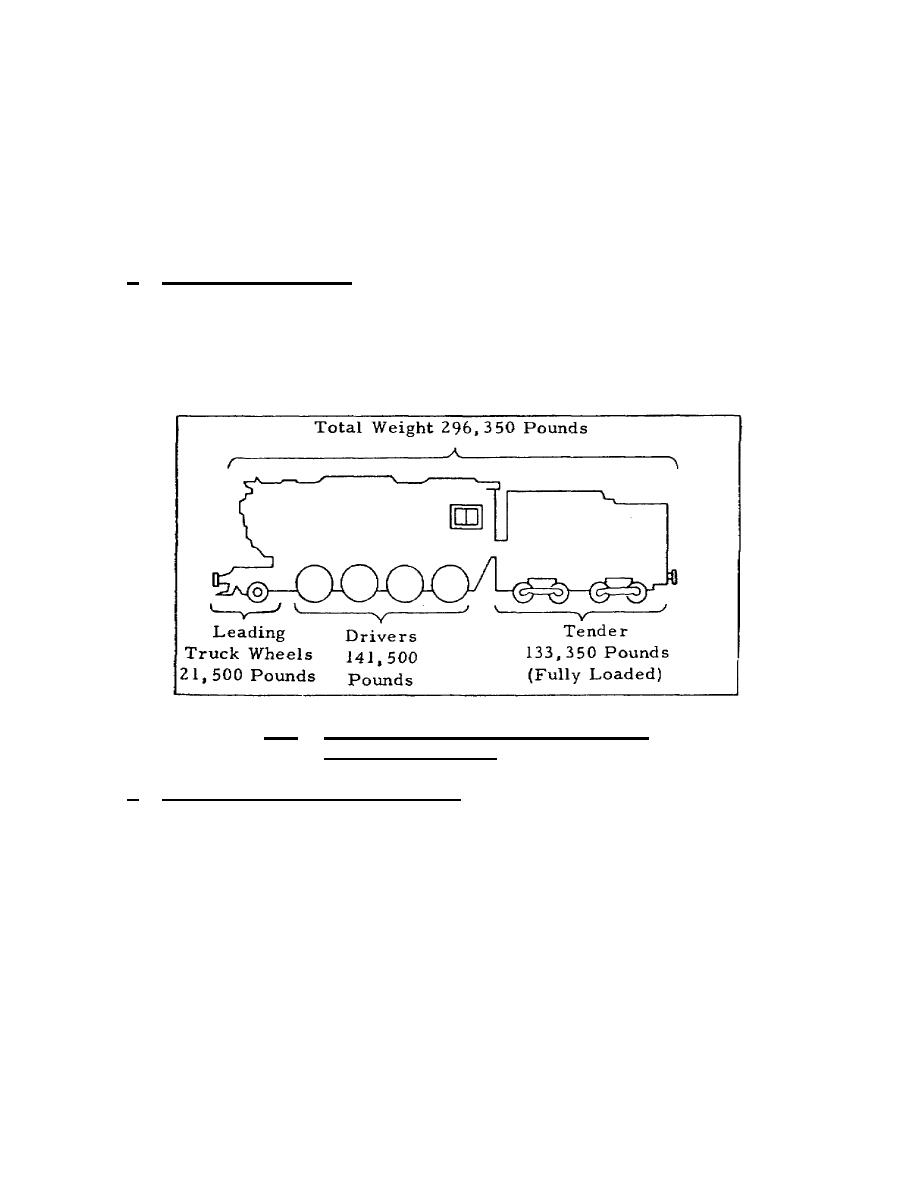
2.3. WEIGHT ON DRIVERS
The amount of a locomotive's weight that rests on its drivers is
expressed in pounds or short tons (STON) of 2,000 pounds each. All
tons mentioned in this text are short tons; therefore the terms "ton"
and "short ton" are used interchangeably. The distribution of weight
on drivers differs between steam and dieselelectric locomotives;
this difference is explained in the following subparagraphs.
a. Steam locomotives. An illustration of the distribution of
weight of a 280 steam locomotive and tender is shown in figure 1.1.
Notice that the locomotive and tender weigh 296,350 pounds, but only
that portion of the total weight that rests on the driving wheels,
141,500 pounds, affects the work capacity or pulling power of the
locomotive.
Figure 1.1. Weight Distribution of a 280
Steam Locomotive.
b. DieselElectric locomotives. The weight distribution of a
dieselelectric locomotive is different from that of a steam
locomotive because the diesel has no tender, leading trucks, or
trailing trucks. All wheels on Army dieselelectric locomotives are
driving wheels. The entire weight of this type of locomotive is
evenly distributed on the driving wheels, as illustrated in figure
1.2, and they all affect its pulling power.
2.4. TRACTIVE EFFORT
Tractive effort (TE), expressed in pounds, is the potential
power of a locomotive. It is the horizontal force or power that a
locomotive can exert on straight, level track if the wheels do not
9



 Previous Page
Previous Page
